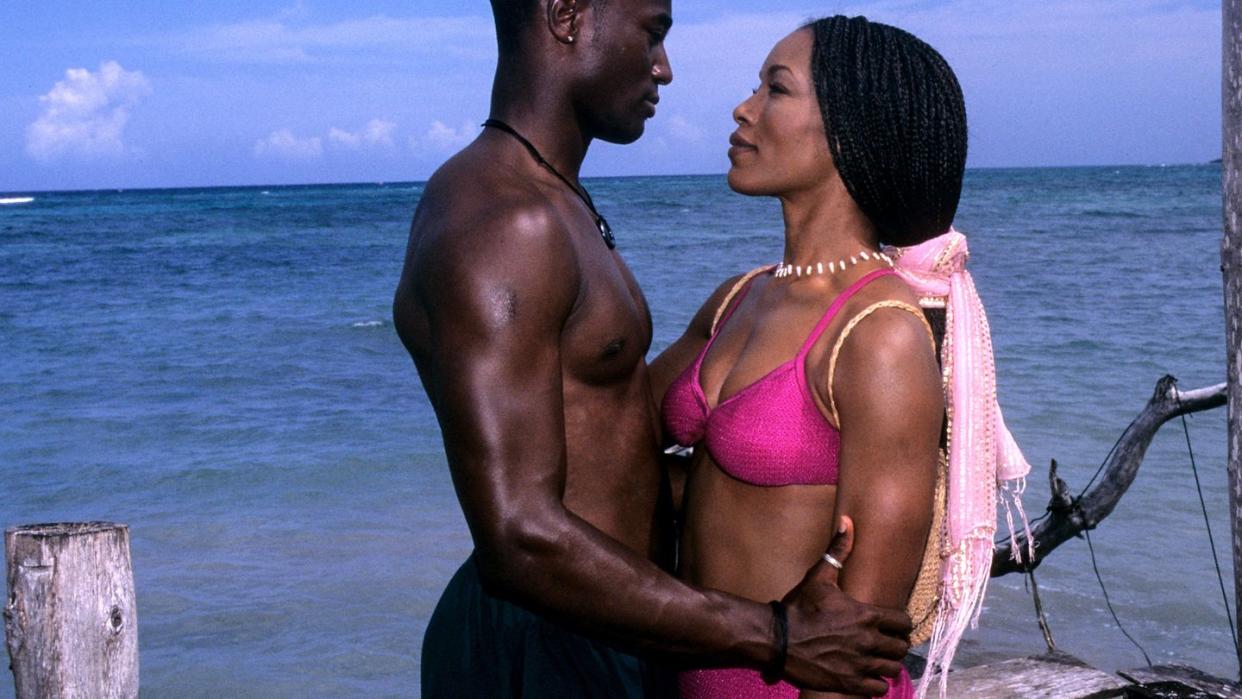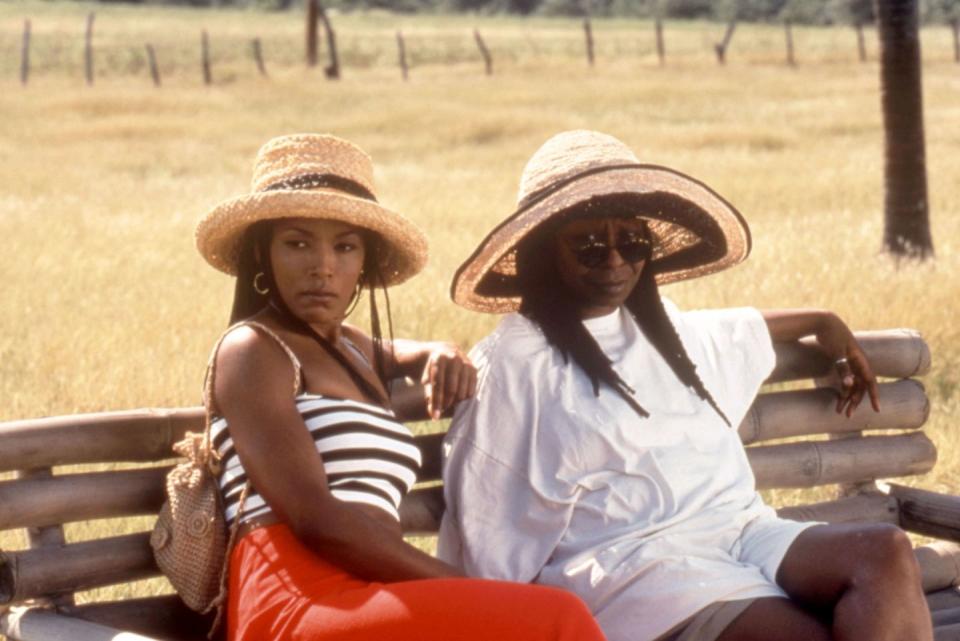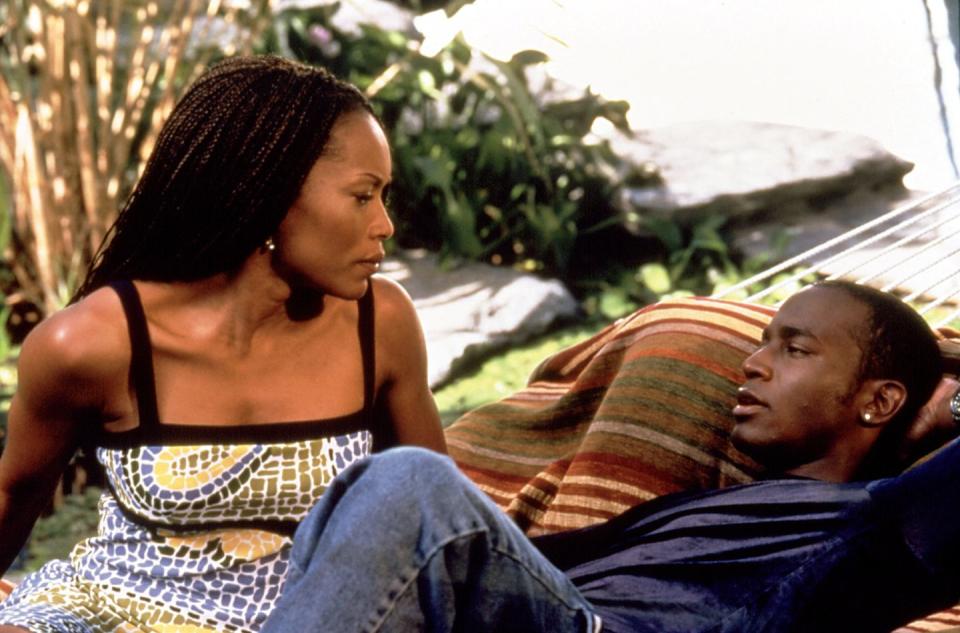An Ode to Stella’s Soft Style

- Oops!Something went wrong.Please try again later.
- Oops!Something went wrong.Please try again later.
If you are a Black person born before 2003, for the past 25 years, there is a good chance that How Stella Got Her Groove Back has been used in some colloquial way to represent a woman taking a vacation, making a major career change, switching up her routine, or breaking with societal norms and (gasp!) dating a younger man. In some way, Stella Payne (memorably played by Angela Bassett in the 1998 film, which celebrates its 25th anniversary today) has been with Black millennials for the bulk of our lives, but viewers often don’t look deeper than the surface-level romance—which is rife with blaring red flags, by the way—and overlook a woman prioritizing pleasure and fulfillment at 40, a vulnerable and consummate 20-plus-year friendship, unanticipated grief, and, my personal favorite, the clothes. To be specific: luxurious looks that exude sexuality and signal to the world that Stella knows who she is and what she wants while juggling very full plates at work and within the confines of her home.
Stella is a San Francisco-based investment analyst and divorced mother of one who is flourishing in pretty much every aspect of her life: She has a beautiful house nestled in the hills of posh Marin County and is securing $10 million dollar accounts while preparing for a merger at work. (Okay, her personal life may be slightly lacking, but Stella insists that she’s not worried…she’s just bored.) She remedies these blasé feelings by taking advantage of her son being out of town to book a spur-of-the-moment trip with her bestie, Delilah Abraham (Whoopi Goldberg). In the seven days and six nights that she spends away in Montego Bay, Jamaica, she showcases serious fashion that is also soft, uncomplicated, and evocative. Shrouded in silk peignoirs, satin short sets, turquoise velvet swimsuits, and knit tops with curve-hugging jeans, Stella exudes what she wishes the world would give her—a little softness, and maybe even a little peace.

These clothing choices weren’t created in a vacuum, though. Stella didn’t wake up one day with a wardrobe that emphasized tailoring and sumptuous fabrications. It can be deduced that she was a New Yorker at some point because she works as a stock broker; her BFF, the aforementioned Delilah, is a window dresser there; and their city life is alluded to many times. Her clothes throughout the film also communicate a New York sensibility while simultaneously bending to the relaxed environment of her life out west. There’s a knowingness to who she is with the textures and silhouettes. There also aren’t any hangups about “dressing for one’s age.” Stella wears what she wants, bare midriff and all, because she’s confident in her sartorial decisions and her body, and, as the movie constantly reminds us with colorful matching Nike sets, she’s a runner.
In fact, Bassett’s body served as the primary inspiration for Academy Award-winning costume designer Ruth E. Carter (Malcolm X, Black Panther, Dolemite Is My Name), but not in the conventional way of making Stella’s character “sexy.” “Soft, soft, soft” was Carter’s mantra when brainstorming costumes for Bassett (such as the fabulous custom pink demi swimsuit and coordinated maxi skirt), according to the L.A. Times in a 1998 interview. On the heels of films like 1993’s What’s Love Got to Do With It and 1997’s Contact, Carter wanted to skew more glamorous—“all the time.”

That’s one of the great costume narratives about this particular film: Stella doesn’t fall into the trope that love changed her sense of style, but rather, the audience gets a glimpse of the expansiveness of her wardrobe as her life continues to expand from the first to the very last scene. Her character is never stodgy, rigid, or prudish—actually quite the opposite—but her seemingly never-ending responsibilities are the genesis of her view that pleasure is frivolous and imprudent. We see this throughout her time in the office. In her day-to-day life, Stella grasps for pleasure where she can in camel-colored Valentino skirt suits adorned with feminine touches like a tie at the waste in lieu of a simple double-breasted blazer. Susan Lazar turtleneck dresses are layered with Moschino blazers, and crisp gray suits paired with silver accessories are worn to comfort a friend in need. There’s always a flash of personality in Stella’s wares, and it’s not for a man’s enjoyment.
Perhaps the enduring romanticism of Stella’s costumes, and Carter’s work, is the dignity of not presenting her as a lovelorn woman in the midst of a midlife crisis, but instead using clothes to tell a crucial part of her backstory: the confidence she revels in, and how love only expanded that revelry—it didn’t create it. It’s an apt metaphor for the Black woman’s ability to create romance and opulence within our wardrobes, even when the world can sometimes make those realities feel restricted. We’ll always get our groove back (pun intended).
You Might Also Like

